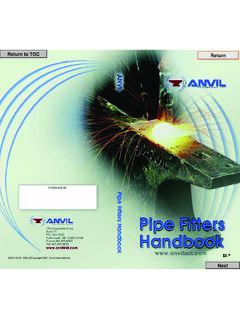Transcription of A-level History 7042 Guide to the source question on ...
1 A-level History 7042. Guide to the source question on Component 2. Guide to source questions - A-level History 7042. Introduction This Guide has been produced to show how the mark scheme for the Component 2 source question ( question 1), will be applied and to illustrate approaches to assessment to assist teachers in preparing students for the examination. Responses have been provided by schools and were written by students throughout the course of their studies, although not under timed examination conditions. Consequently, they are not intended to be viewed as model' answers, and in some cases are longer than could be reasonably expected in the one hour permitted in the exam. As such, the commentaries are based on the qualities demonstrated in the responses rather than their length. The generic mark scheme for the extract/ interpretation question is on the following page. Assessment objectives and timing question 1 on Component 2 targets A02: Analyse and evaluate appropriate source material, primary and/or contemporary to the period, within its historical context.
2 It is advised that students spend one hour answering this question . Potential approaches In answering the source question ( question 1) on Component 2, students may choose to respond to each source in turn, or to adopt a more holistic approach to common content and features of each source . This document contains examples that illustrate how both approaches are acceptable, though the recommended approach as it is the most straightforward - is to evaluate each source in turn. Unlike at AS, the source question does not require students to undertake a comparative assessment or evaluation, but to evaluate each source on its own merits as to how valuable the source is in relation to the question . Regardless of which approach is adopted, students are expected to evaluate each of the three sources, considering, for example, the significance of the provenance, style and emphasis and the content of the sources to the question . Effective answers will combine secure knowledge of the historical context with careful assessment of the value of the sources (remembering that even sources that are judged inaccurate', for example, may still be valuable to a historian).
3 The evaluation will be specific and focused and avoid generalised comments in relation, for example, to provenance or type of source . Evaluation must be focused on the question and general comments should be avoided. Introductions/conclusions It is recognised that students like to, and are trained to, write introductions and conclusions, essential features when answering a traditional' essay question , as is found in Section B of the paper. Whilst neither is required in response to the source questions, we accept that students may wish to produce them. Such an approach will not be penalised by examiners an answer with a conclusion which comments on some general issues associated with the interrogation of the sources might strengthen the answer. However, as shown in the examples below, very good answers without conclusions can be awarded full marks, and it may be most productive for students to begin the evaluation without an introduction. Substantiated judgement should, however, be provided in the evaluation of each source .
4 2. Guide to source questions - A-level History 7042. Generic mark-scheme Target: AO2. Analyse and evaluate appropriate source material, primary and/or contemporary to the period, within the historical context. Generic Mark Scheme for source based questions L5: Shows a very good understanding of all three sources in relation to both 25-30. content and provenance and combines this with a strong awareness of the historical context to present a balanced argument on their value for the particular purpose given in the question . The answer will convey a substantiated judgement. The response demonstrates a very good understanding of context. L4: Shows a good understanding of all three sources in relation to both content 19-24. and provenance and combines this with an awareness of the historical context to provide a balanced argument on their value for the particular purpose given in the question . Judgements may, however, be partial or limited in substantiation. The response demonstrates a good understanding of context.
5 L3: Shows some understanding of all three sources in relation to both content 13-18. and provenance together with some awareness of the historical context. There may, however, be some imbalance in the degree of breadth and depth of comment offered on all three sources and the analysis may not be fully convincing. The answer will make some attempt to consider the value of the sources for the particular purpose given in the question . The response demonstrates an understanding of context. L2: The answer will be partial. It may, for example, provide some comment on the 7-12. value of the sources for the particular purpose given in the question but only address one or two of the sources, or focus exclusively on content (or provenance), or it may consider all three sources but fail to address the value of the sources for the particular purpose given in the question . The response demonstrates some understanding of context. L1: The answer will offer some comment on the value of at least one source in 1-6.
6 Relation to the purpose given in the question but the response will be limited and may be partially inaccurate. Comments are likely to be unsupported, vague or generalist. The response demonstrates limited understanding of context. Nothing worthy of credit. 0. 3. Guide to source questions - A-level History 7042. Level 5 responses Paper 2J ( A-level ) America: A Nation Divided, c1845-1877: Additional specimen question paper source A. Adapted from the Seventh of March speech to the US Senate (1850) by Daniel Webster, a leading Northern Senator. He gave this speech to the US Senate in favour of the Compromise. Mr. President: I wish to speak today, not as a Massachusetts man, nor as a northern man, but as an American and a member of the Senate of the United States. It is fortunate that there is a Senate of the United States; a body not yet moved from its respectability, not lost to a just sense of its own dignity and its own high responsibilities and a body to which the country looks, with confidence, for wise, moderate, patriotic and healing counsels.
7 It is not to be denied that we live in the midst of strong agitations and are surrounded by very considerable dangers to our institutions and government. The imprisoned winds are let loose. The east, the north and the stormy south combine to throw the whole ocean into commotion, to toss its billows to the skies and disclose its profoundest depths. I do not affect to regard myself, as holding, or as fit to hold, the helm in this combat with the political elements. source B. Adapted from The rise and fall of the Confederate Government volume one (of two), by Jefferson Davis, 1881. While the compromise measures of 1850 were pending and the excitement concerning them was at its highest, I one day overtook Mr. Clay, of Kentucky, and Mr. Berrien, of Georgia, in the Capitol grounds. They were in earnest conversation. It was the 7th of March, the day on which Mr. Webster had delivered his great speech. Mr. Clay, addressing me in the friendly manner which he had always employed since I. was a schoolboy, asked me what I thought of the speech.
8 I liked it better than he did. He then suggested that I should join the compromise men, saying that it was a measure which he thought would probably give peace to the country for thirty years. Then, turning to Mr. Berrien, he said, You and I will be under ground before that time, but our young friend here may face trouble in the future. I somewhat impatiently declared my unwillingness to transfer to future generations a problem which they would be relatively less able to meet than we were. 4. Guide to source questions - A-level History 7042. source C. Adapted from The New York Herald, September 8, 1850. The New York Herald was a Northern, popular and controversial newspaper. Within the short space of two days, the House of Representatives has passed four of the most important measures connected with the slavery agitation, which grew out of the acquisition of new territory through the Mexican War. Leaving only the Fugitive Slave Bill and the bill for the abolition of slave traffic in the District of Columbia to be disposed of.
9 The former was passed by the Senate and the latter being now under consideration in that body. The whole of this disagreeable subject will, therefore, be shortly wound up and a check put to the ultras and fanatics of different sections of the Union, who have exerted themselves to keep alive the slavery agitation and maintain an estrangement of feeling between the Northern and the Southern States. The subject, therefore, which has caused so much uneasiness to the friends of the Union everywhere, as well as to the admirers of our political institutions at home and abroad, is set at rest in a manner satisfactory to all. 01 With reference to these sources and your understanding of the historical context, assess the value of these three sources to an historian studying the Compromise of 1850. [30 marks]. Student response source A is a famous speech made by Daniel Webster in favour of the 1850 Compromise. The source is therefore useful to an historian as it highlights the arguments from a leading Northern Senator, which convinced many in the Senate to support the Compromise.
10 Daniel Webster was a leading Northern Whig who would be able to broaden the appeal of the Compromise that had been proposed by the leading Southern Whig Henry Clay. This would be helpful to a historian as it shows that both Northern and Southern Whigs supported the Compromise. There was some surprise at Webster's support for the Compromise as he was seen as an opponent of slavery and the Compromise contained the controversial Fugitive Slave Act. Webster received a backlash in New England from abolitionists and has been accused of being inconsistent. The speech is therefore useful to historians as it shows that a leading figure was willing to put some of his beliefs to one side in order to find compromise over sectional issues. This highlights that the 1850 Compromise was a moment where leading political figures hoped that they could bring the USA together. The fact that Webster had his eye on high office most notably the Presidency is important when examining this extract. The speech could be seen as an attempt by Webster to gain support from Southern Whigs to bolster any future hopes he had for becoming President.













